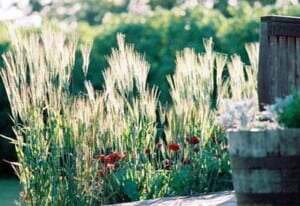The recent news that in the years 2012-2013 poison control centers received over 17,000 calls about children ingesting product from laundry soap detergent pods has your concerned Planet Natural Blogger thinking. That’s a call every hour. What can be done to protect the kids? We certainly can’t package colorful, candy-shaped poisons in containers that look like candy jars.
The findings come even as the pods — they’re also available for automatic dishwashers — are only a small part (6% in 2013 ) of the household detergent markets. Those 17,260 kids reported in the study were all six years old or younger. One-third of them were between the ages of one and two. The poisonings could be quite severe, as reported by ABC:
Toxicologists aren’t sure exactly what in the product is making the kids sick. Other laundry detergents cause only mild stomach upset or even no symptoms at all. But the pods cause severe symptoms rapidly.
There are multiple reports of toddlers who, within minutes of swallowing or biting into one of the packets, developed vomiting, wheezing and gasping. Some of them became non-responsive or had to be put on ventilators or intubated.
Let’s get one thing clear. Children shouldn’t have the opportunity to ingest laundry detergents and household cleaners of any type, including those labeled non-toxic and allergen free. Just because you’ve (wisely) been using natural and environmentally sound products doesn’t mean you can leave them around. All cleaning products should be in a place where kids can’t get them. A certain amount of attention is needed when using them. How many of these incidents were of the just-turned-my-back-for-a-second kind, with an adult present but busy, say, doing laundry?

A BESTSELLER!
CitraSuds
Extremely concentrated (2X), so it's lighter and more convenient to carry and store.
$11.50Learn moreKeep your home sparkling with peace of mind! Green or all natural cleaning products have the same degreasing, dirt-fighting and stain-removing power of harsh commercial brands… without the harmful chemical solvents and synthetic fragrances!
Accidental poisonings are only part of the problem. What about the caustic or toxic chemicals commonly used in many household cleaners? What do we spread when we wash and clean, and how does it accumulate?
The other side of this dilemma is that our clothes, our dishes, our bathrooms, our windows and everything else have to be cleaned. How do we do it safely?
Choosing products without certain compounds can go a long way to reducing you and your family’s exposure. Many product labels, required by law, inform us which products should be avoided entirely. Products labeled “poison” or “danger” are of extreme toxicity and should be avoided as should those labeled “corrosive” and “may cause burns.” Things like bleach, drain cleaners, products with ammonia, and abrasive cleaners containing chlorine are particularly dangerous. Then there’s the stuff hardly noticed, things like alkylphenol or APEs (PDF), chemicals added to cleaners to help water dissolve more dirts and are endocrine disruptors, and organochlorines used in detergents and degreasers that are known to be both carcinogenic and endocrine disruptors.
Using these products not only exposes you to these toxic chemicals left behind in your clothes and on your countertops, it’s also a source of indoor air pollution. And, of course, there’s always the complication of allergens.
Adult exposure is a bad thing. But the risks to children are acute for several reasons, according to the GreenClean Certified website:
Consider though that the most common methods of exposure are through the skin and respiratory tract. Children are frequently in contact with the chemical residues housecleaning products leave behind, by crawling, lying and sitting on the freshly cleaned floor. Children, especially infants and toddlers, frequently put their fingers in their mouths and noses, increasing risks for exposure. When infants eat solid food, how common is it that the food is placed directly on a high chair tray that has just been wiped down with a household cleaner or dish detergent? Another factor is that, pound for pound, children’s’ exposure levels are higher than adults’ because, although the amount of chemicals in an exposure remains equal, children’s bodies are smaller so the concentration is stronger, essentially. Also, their immune systems are still developing.
These substance also enter the environment as they go down the drains and toilets of our homes. Keeping them out of the water supply has become a problem.
The good news is that safer alternatives exist. Why would you use anything else?

We at Planet Natural think it’s only natural (heh) that we offer safe, non-toxic cleaning supplies. Doing so meshes well with our interests in organic, chemical-free gardening. We want to lessen the dangers that various toxic compounds bring to both places, our vegetable gardens and landscape as well as inside our homes, the place where your family eats, sleeps, and plays. We also want you to use them wisely. Here’s an informative guide from the Organic Consumers Association on the dangers and solutions to using risky cleaning products.











